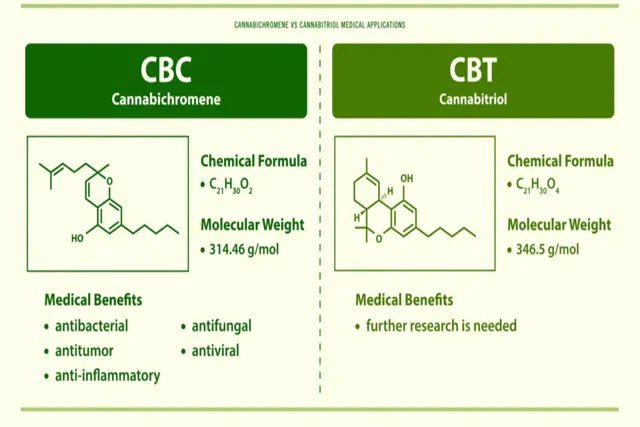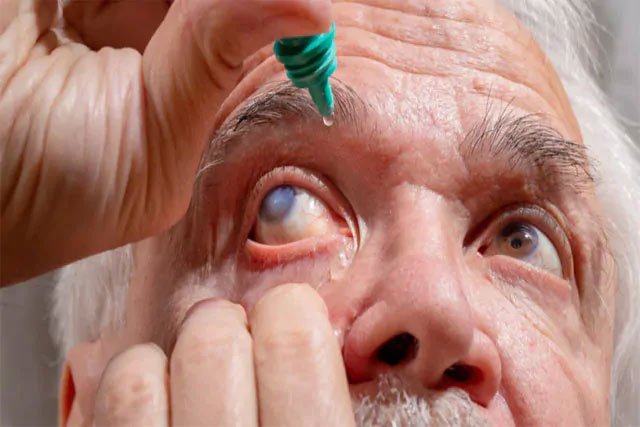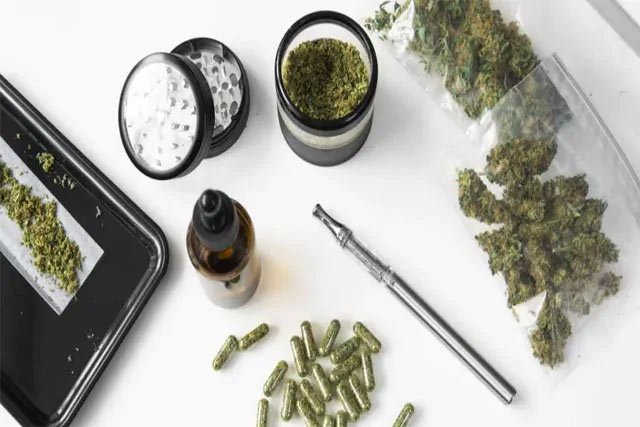While THC and CBD steal most of the attention when it comes to cannabis, other intriguing cannabinoids, such as CBT Oil, are worth a look. As scientists learn more about cannabinoids and their effects on the body, it’s increasingly apparent these minor cannabinoids are more important than first thought.
Cannabitriol (CBT) is a phytocannabinoid found in trace amounts in the cannabis plant. First isolated in 1966, researchers have since determined that CBT is an oxidation product of THC. Little is known about CBT’s effects, but preliminary studies suggest the substance may work as an estrogen blocker and aromatase inhibitor.
Here’s a concise version: “In this post, I’ll discuss what we know about CBD oil and its potential for therapy. I’ll also touch on how CBT differs from better-known cannabinoids. If cannabidiol has caught your interest, you’re in the right place!
1. What is CBT Oil?

As one of more than 120 identified phytocannabinoids, CBT likely does most of its work in the endocannabinoid system (ECS). The ECS is a biological system that promotes both mental and physical well-being. The network consists of naturally produced endogenous cannabinoids (endocannabinoids) and receptors.
Most cannabinoids interact with receptors, either binding them as agonists or blocking them as antagonists. Some cannabinoids also engage with receptors outside of the ECS – CBT may do this, too.
In 1966, the Agricultural and Biological Chemistry journal published a paper from scientists at Hokkaido University in Japan, marking CBT’s first identification and isolation. The researchers discovered CBT in a strain of Japanese hemp.
Currently, CBT remains much more obscure than other minor cannabinoids, such as cannabigerol (CBG), cannabinol (CBN), and cannabichromene (CBC). However, as a naturally occurring cannabis compound, we can assume CBT is present in trace levels in many broad and full-spectrum hemp products.
2. Is CBT Psychoactive?
It is unclear whether CBT is psychoactive. Because CBT is found in such small concentrations, researchers have found it difficult to extract and study the compound.
However, we do know that CBT bears a structural resemblance to THC and that THC oxidizes into CBT. This is also the case for CBN, which researchers have concluded is mildly psychoactive. The same could be true of CBT, but it’s all speculation now.
3. Is CBT Oil Legal?

Going by the same rules applied to all cannabinoids, hemp-derived CBT is legal in the United States, but marijuana-derived CBT is not. Federal law – specifically the 2018 Agriculture Improvement Act (Farm Bill) defines hemp as cannabis with less than 0.3% delta-9-THC (THC).
The Farm Bill made all cannabis components legal, except THC, which remains controlled.
In theory, manufacturers could develop hemp-based CBT tincture oils and edibles, as we have seen for CBD, CBG, and other cannabinoids. But given the lack of research on CBT and the difficulties with extraction, don’t expect this to happen anytime soon.
4. What is the Difference Between CBT and Other Cannabinoids?
The main difference between CBT and more famous cannabinoids like CBD and THC is that there is a lot less of it. Even many cannabis experts haven’t heard of CBT, which doesn’t even enjoy the profile of CBG, CBN, CBC, and others.
Compared to THC, we can say with some confidence that it doesn’t have potent psychoactive effects. If CBT was intoxicating to any extent, you can bet we would have heard by now! Instead, if CBT has any isolated value, it would be as a therapeutic substance.
CBT is similar to CBD in at least one regard – both cannabinoids suppress the psychoactive effects of THC. Like CBD and some secondary cannabinoids, CBT is also under investigation as a treatment for glaucoma.
Beyond that, we don’t know enough about CBT to say how it differs from other cannabinoids. Hopefully, as more funding becomes available for cannabis-based research, we’ll have a chance to learn more about the effects of CBT.
5. 4 Potential Benefits of CBT
Since CBT was first uncovered in the 1960s, researchers worldwide have conducted a handful of studies to try and learn more about it. I must note that CBT research is in its very early stages, and we cannot say anything about its effects with high confidence.
Please do not take this information as medical advice. The following content on CBT’s potential benefits is meant for educational purposes only.
5.1. Aromatase Inhibitors

Also known as estrogen blockers, aromatase inhibitors are a group of drugs given to postmenopausal women to treat breast cancer and men to manage gynecomastia. Aromatase inhibitors are also used as treatments for precocious puberty, endometriosis, and short stature.
Scientists documented the potential of CBT as an aromatase inhibitor in a 2020 study published in the Dhaka University Journal of Pharmaceutical Sciences. The researchers look at three little-known cannabinoids – CBT, cannabidiol (CBD-C1), and cannabidiol (CBR).
CBD-C1 and CBT both demonstrated anti-cancer properties, while CBP appeared weak and ineffective. The authors concluded that CBT could have a promising future as a potent aromatase inhibitor.
In 2022, the Recent Patents on Anti-Cancer Drug Discovery journal featured a paper suggesting that CBT could be a more effective treatment for breast cancer than tamoxifen. Marketed as Nolvadex, tamoxifen was the first hormonal therapy to ever be approved and is used to prevent and treat breast cancer in women.
Once again, the signs are encouraging, but the research is at such a preliminary stage. The authors suggested that future in vivo or in vitro studies could yield more information. After that, we would need animal studies before clinical trials in humans to determine whether CBT works as an aromatase inhibitor and breast cancer treatment.
If CBT eventually gets used for this purpose, it would unlikely be in isolation. As cannabinoid science evolves, we expect to see more focus on the development of specific cannabinoid combinations for various conditions.
5.2. Reduces THC’s Psychoactive Effects
In 2007, the Journal of the American Chemical Society published a study that found that CBT can limit the psychoactive effects of THC. Indeed, the researchers went so far as to suggest that CBT could be one of the main constituents in cannabis responsible for this effect.
Unfortunately, no studies have followed up on this topic since. It’s possible that even if CBT does have potent anti-psychoactive properties, it might never have any practical use. Because CBT is tricky to extract from hemp, it’s also expensive to extract.
Meanwhile, there’s already a cannabinoid that limits the high from THC – the better-known and more common cannabidiol (CBD). While CBT could theoretically be more effective than CBD, it’s much easier to extract high quantities of the latter.
You may be wondering why people may want to limit THC’s psychoactive effects. Some find the high from modern-day marijuana products too strong and that a limiting agent makes the experience more pleasant.
Others are not interested at all in getting high but need THC for its therapeutic effects – for example, THC is sometimes used in the treatment of rare epileptic seizures. CBD – and perhaps in the future CBT – helps reduce side effects and make the treatment more manageable.
5.3. Possible Glaucoma Treatment

Researchers are studying several cannabinoids as potential therapeutics for glaucoma. Early trials indicate that some cannabinoids can alleviate the intraocular pressure associated with glaucoma, an eye condition that damages the optic nerve and can lead to a loss of vision.
CBT is one such cannabinoid that may help with glaucoma, with hopes also high for CBN and CBD. Current Eye Research published a research paper from famous cannabis scientist Mahmoud Elsohly in the 1980s, which showed that CBT can reduce intraocular pressure in rats.
Cannabinoid studies on animals are interesting, although there’s no guarantee that the findings will be replicated in humans. Furthermore, the absence of follow-up research in the past four decades suggests that any ground-breaking CBT science could take a long time.
Moreover, if CBT does have medicinal value for glaucoma, it’s questionable whether it would be financially viable if other cannabinoids are also effective. In theory, CBT could be given alongside CBD and CBN as part of an eye drop formulation.
6. Types of CBT Products
As of November 2022, no companies appear to be manufacturing CBT products for commercial use. This is no surprise, considering the expensive nature of the process and the lack of public interest. However, let’s imagine a scenario where CBT products were widespread.
In the years to come, if CBT gains traction, we might see CBT tincture oils or e-liquids. Edibles and capsules could also become popular. Infused topicals (i.e., creams, salves, and balms) are possible, although there are no indications that CBT has any benefits for the skin.
It’s unlikely that we’ll see CBT-infused flower products or concentrates. CBT doesn’t have recreational potential, so there would be no reason to smoke it or consume crazily high quantities in a single hit.
7. What Does the Future Hold for CBT Oil?

Cannabitriol faces an uncertain and unclear future. The cannabinoid is seemingly not as highly regarded as other minor cannabinoids, but when taking all of the 120-plus identified cannabinoids into consideration, it’s still more relevant than most.
Research on CBD and THC is a top priority, followed by CBC, CBG, and CBN. CBT is lower on the list, so only a few studies are expected annually.
After all, researchers have barely conducted any animal trials on CBT yet, never mind studies on humans. With no significant scientific evidence to speak of, there’s no chance that hemp companies will be pouring money into developing CBT products anytime soon.
Moreover, even if CBT does have therapeutic value, a cost-benefit analysis may deem it too expensive to be worth it. However, if the cannabinoid’s aromatase-inhibiting effects are as potent as some scientists have suggested, CBT oil may have a medicinal role to play going forward.




